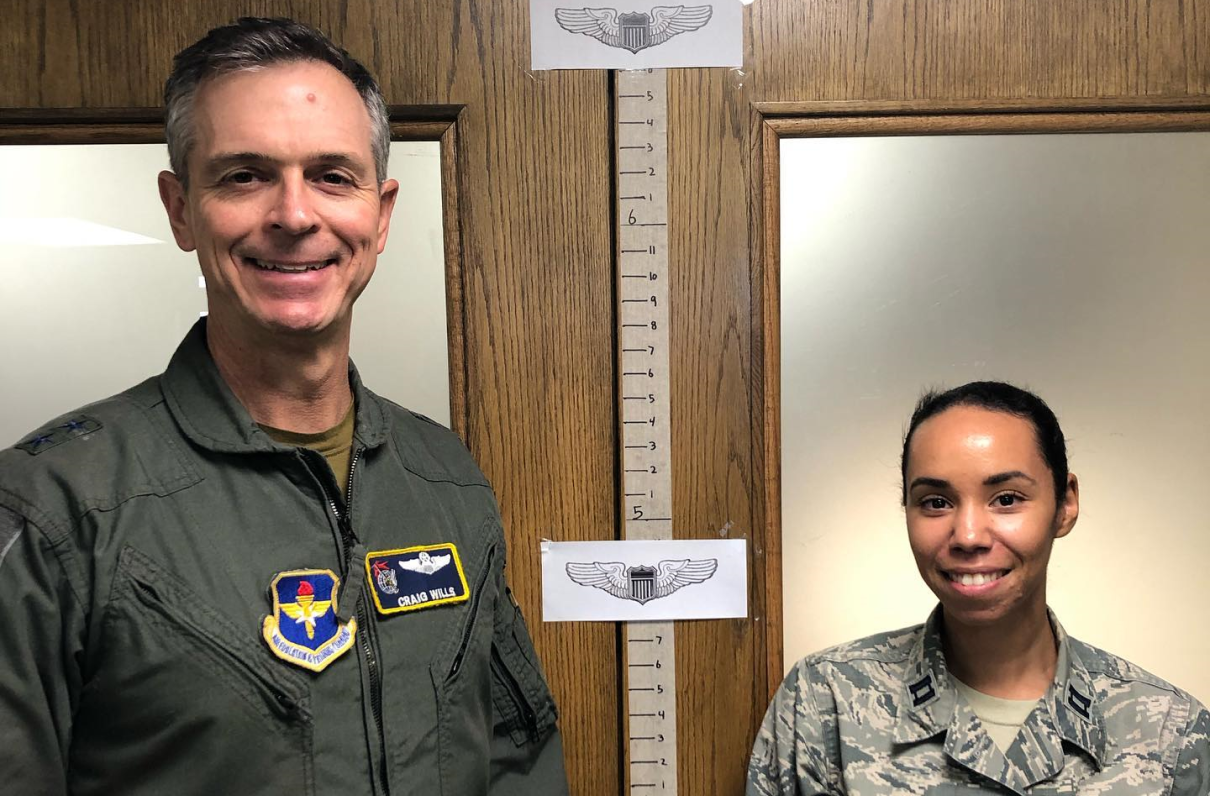This article by Oriana Pawlyk originally appeared on Military.com, the premier resource for the military and veteran community.
Nearly six months after the U.S. Air Force announced it wanted more pilot applicants to take advantage of its height waiver program, the service has decided to ditch the initial height requirement altogether to court more aviators.
The service gave notice Friday that it recently removed its minimum height requirement for officer applicants.
"We're really focused on identifying and eliminating barriers to serve in the Air Force," Gwendolyn DeFilippi, assistant deputy chief of staff for manpower, personnel and services, said in a release.
"This is a huge win, especially for women and minorities of smaller stature who previously may have assumed they weren't qualified to join our team," said DeFilippi, who chairs the Department of the Air Force Barrier Analysis Working Group.
[MOAA's Career and Transition Resources]
The service revised standards in 2015 to allow those shorter than 5 feet four inches or taller than 6 feet five inches to apply for a waiver.
The initiative, led by then-Air Force Secretary Deborah Lee James, was meant to open opportunities for those otherwise qualified to become pilots and to include more diverse officer recruits -- particularly women.
In November, the Air Force again encouraged prospective airmen to pursue the waiver program to diversify its aviator ranks. The announcement came a few weeks after the service came up 2,100 pilots short of the 21,000 it needed in fiscal 2019.
With the height requirement eliminated, the Air Force's medical and operations communities "will apply an anthropometric screening process to individual applicants for placement in an aircraft they can safely fly as they pursue a rated track," according to the release.
[RELATED: Official Space Force Flag Unveiled at the White House]
A pilot gets full anthropometric measurements: buttocks to knees; knees to ankles; and seated height, which should be between 34 and 40 inches. The measurement also includes "functional reach, wingspan, body mass, weight-to-height ratio, waist-to-hip, hip-to-knee and more," the service has stated.
The Air Force also measured each of its airframes' cockpits using lasers to get a precise assessment of pilot height restrictions, Maj. Gen. Craig Wills, head of the 19th Air Force, previously told Military.com.
Wills said one of the smallest pilots who used the waiver process and was approved stands at just 4 feet 11 inches. The tallest is 6 foot nine inches, he added.
"While most height waivers were approved under the old system, feedback indicated the entire waiver process served as a barrier, which negatively impacted female rated accessions," said Lt. Col. Christianne Opresko, branch chief on the Air Force's Air Crew Task Force and an aerospace physiologist. "It's hard to determine how many women did not previously apply due to their perception of not being fully qualified or having to pursue a waiver."
[RELATED: Latest Transition and Career News From MOAA]
The Air Force hopes that the case-by-case analysis will encourage more women to sign up, said Lt. Col. Jessica Ruttenber, Air Force mobility planner and programmer and team leader on the Women's Initiative Team.
"Studies have shown that women's perceptions about being fully qualified for a job makes them less likely to apply, even though there is a waiver option," said Ruttenber, who led the height standards adjustment effort. "Modifying the height standard allows the Air Force to accommodate a larger and more diverse rated applicant pool within existing aircraft constraints."
Citing the U.S. Department of Health and Human Services' "Anthropometric Reference Data for Adults," taken between 2007 and 2010, the average height for U.S. women "aged 20 and over is 63.8 inches across all ethnic groups," the release states. "In contrast, the average height for U.S. males aged 20 and over, across all ethnic groups, is 69.3 inches."
The service said the Women's Initiative Team is one of five teams within the Department of the Air Force Barrier Analysis Working Group.
The service also launched a project in 2019 within the Air Force Lifecycle Management Center focused on gathering female perspectives to develop better-fitting uniforms and gear.
Other articles by Military.com:
Air Force PT Test Suspensions May Continue Past June
Bombers Take Center Stage in Air Force’s New Force Employment Strategy
A Very Good Boy Named 'The Dude' Sniffs Out Bombs on Patrol with US Troops
Why Should You Join MOAA?
MOAA provides resources for officers from all uniformed services and their families throughout all stages of their careers, including after they’ve taken off the uniform. Learn more about the benefits of membership.
Already a MOAA member? MOAA has hundreds of chapters around the country. Get involved in your community by finding the one closest to you and joining today!
